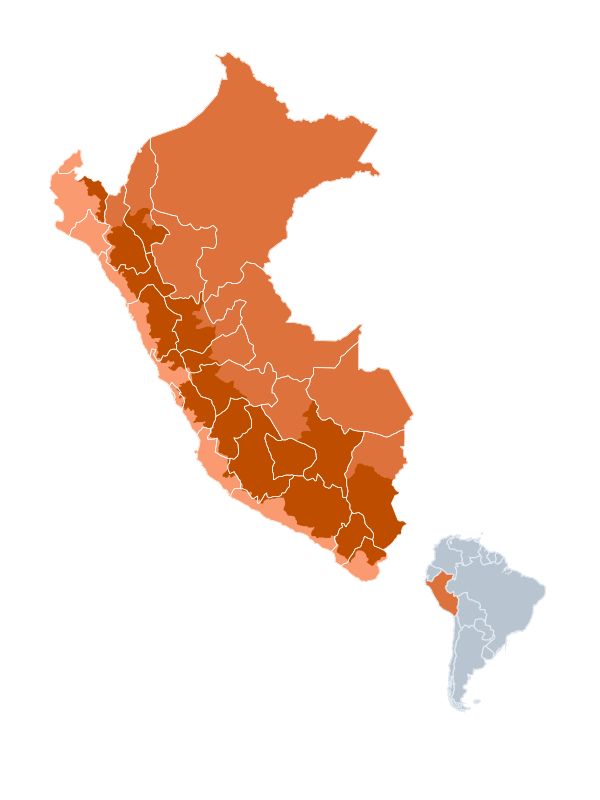Coastal Region / Lima
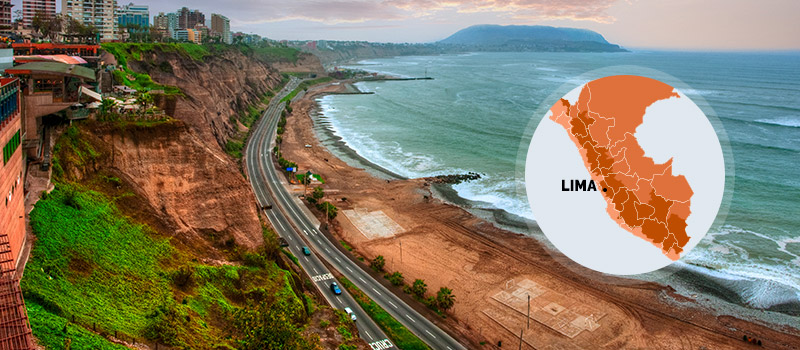
In the north is the city of Caral, the oldest civilization of America, and to the south is the Archaeological Complex of Pachacamac. Lima's history predates the colonial presence in the country. The establishment of the viceroyalty transformed the city into the main political and administrative center of Southamerica. During this period, significant churches, monasteries, mansions and balconies were built. The arrival of modernity didn’t transform the historic center, which is recognized as a World Heritage Site. Museums with great works of art, archaeological sites, beaches, the boardwalk, valleys, natural reserves, the nightlife, the thrill of adventure sports and the exquisite cuisine gives Peru’s capital an authentic personality and makes tourism in Lima a unique experience in the country.
What can we do in Lima ?
-
City Tour
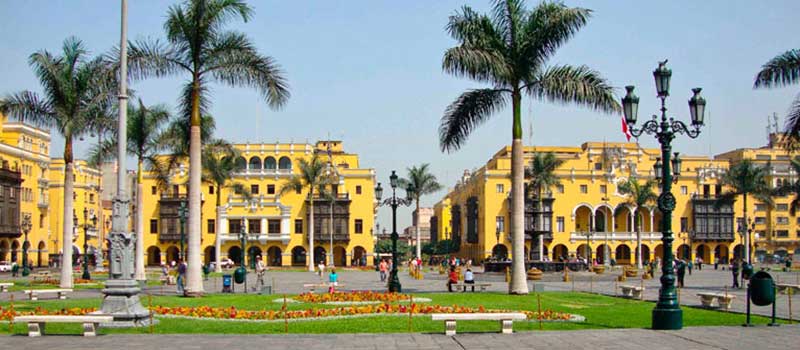
Our tour of Lima starts with the Colonial part in the historical Centre. Our first stop will be The Plaza de Armas (Main Square), where you will admire the front of the Palacio de Gobierno (Government Palace), the Cathedral of Lima, Archbishop`s Palace, and the Municipalidad (City Hall), as a symbol of Colonial times on 16th Century. Continue with the San Francisco Monastery and its famous underground crypts known as the Catacombs.
Then, we will visit the modern part, and the neighbors of Isidro and Miraflores where we will see the Financial Center, the San Isidro Golf Course and the Olive Grove Park. We will also go by the Huaca Pucllana, a pre-inca pyramid shape temple that has survived the expansion of modern civilization. We will stop at Parque del Amor (Love Park) and enjoy a nice view of the Pacific.
-
Larco Herrera Museum
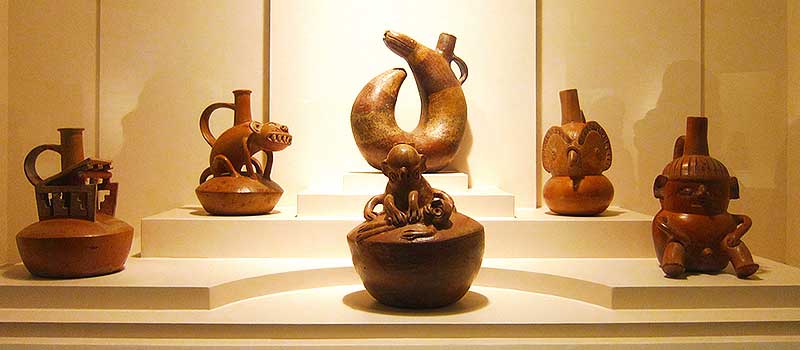
Visit the Larco Herrera Museum, located in Pueblo Libre district, a Viceregal mansion dated 18th, that houses more than 3,000 years of Peru's pre-Columbian history. The museum shows a fine collection of gold and silver jewelry. The Larco Herrera also contains a collection of erotic ceramic “huacos” that explain how old Peruvian see the different stages of life (from conception, birth, youth, reproduction, death).
-
Pachamamac
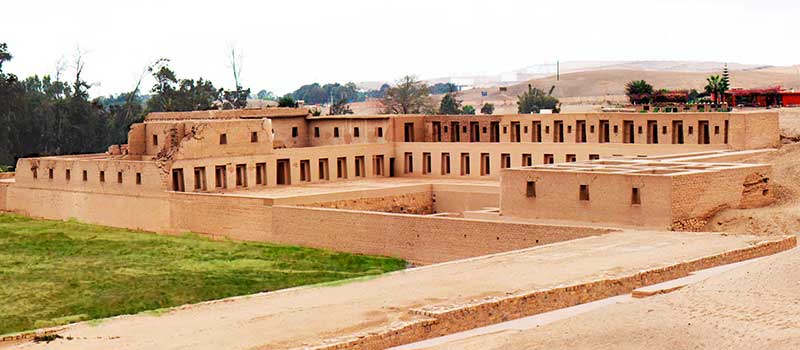
Our tour begins with the splendid citadel of Pachacamac, Pachacamac sanctuary of God, creator of the universe for the ancient Andean peoples.
The citadel comprises temples, pyramids and palaces. The Temple of the Sun, the Temple of Pachacamac, the "Acllahuasi" or Palace of the Virgins of the Sun, among others. The whole place was considered sacred and part of the mystical axis of the world.
Coastal Region / Ica & Paracas
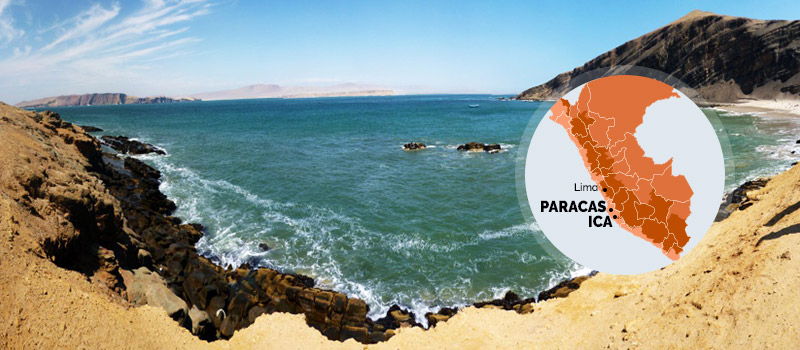
Ica boasts characteristic dunes and a vast desert etched with enigmatic figures, the Nazca Lines, transformed into fertile fields by ancient cultures: The Paracas and the Nazca. Land of valleys, sun, beaches and a Natural Reserve inhabited by a lush variety of flora and fauna.
The Nazca lines: on the vast pampas of Nazca Jumana, mysterious lines and geoglyphs form geometric patterns as well the figures of animals, anthropomorphic beings, and plants, among others. But their outlines can only be recognized clearly from the sky aboard small airplanes. Despite numerous studies, the lines are an enduring 2,000-year-old mystery that neither time, nor the regions powerful winds, nor any other natural adversaries have been able to erase. Since their discovery in 1927, many theories have been advanced. María Reiche, the German scholar who dedicated her life to the investigation and preservation of the lines, put forth the hypothesis of an astronomical calendar whose figures marked different solar periods. Among the best-known figures are the hummingbird, the condor, and the monkey. There are more than 800 images outlined in the desert.
What can we do in Ica & Paracas ?
-
Ballestas Islands
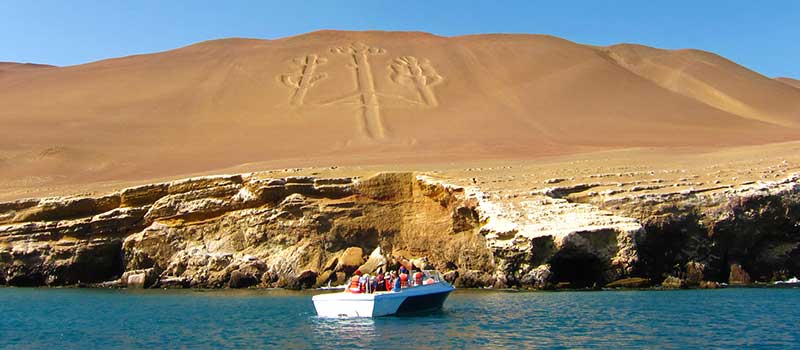
The Islas Ballestas, a nature reserve to observe wildlife, species of thousands birds as well as big colony of sea lions, including penguins, Inca terns and pelicans. On the way, you will also see the Candelabro (an enigmatic figure similar to the Nazca Lines).
The islands are protected, so, the entire excursion is on board, however you will get a close contact with the animals.
-
Paracas National Reserve
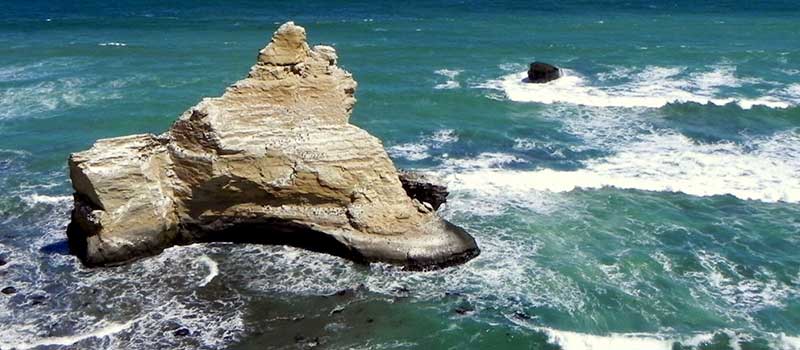
It is a relaxing tour, admiring the landscapes, the Ocean and desert, meanwhile, you learn about one of the most important civilization in Peru, Paracas culture. Walking among nice and special beaches having the chance of tasting fresh seafood.
-
Nazca Lines from Pisco
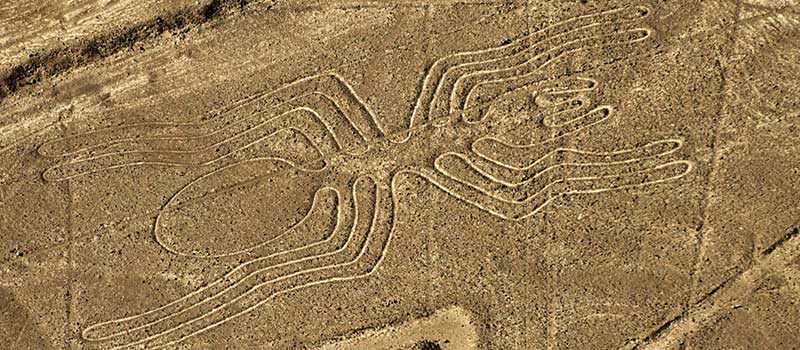
In the morning, you will be assisted and transferred to “aerodrome” to board the airplane to overflight Nazca Lines. On board into a Cessna Grand Caravan, you will enjoy 90 minutes of flight around 12 of the most popular figures and 1:30 hrs in total going and back.
-
Tambo Colorado
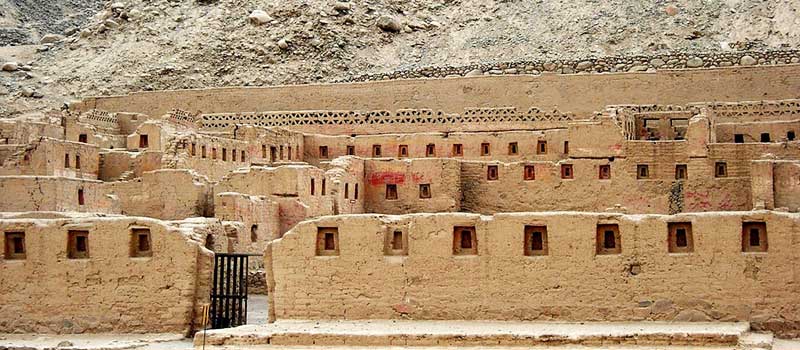
Tambo Colorado was likely built during the 15th or 16th century as a way for the Inca to demonstrate their regional power. At the time, their empire stretched all the way from modern-day Chile to the Ecuador-Colombia border. Sites like Tambo Colorado were used as regional administrative centers aimed at helping integrate the conquered local people.
There are several structures that surround a large central plaza, as well as a raised ceremonial platform known as an Ushnu, which functioned as a sort of throne for the Inca ruler. A number of niches and latticework is also carved into the adobe.
-
Nazca lines from Nazca
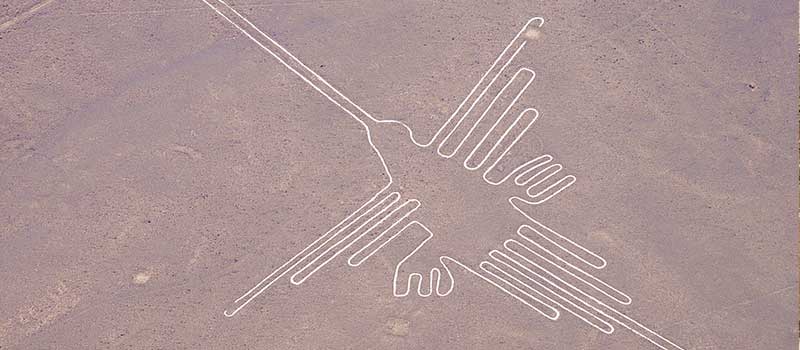
In the morning, you will be assisted and transferred to “aerodrome” to board the airplane to overflight Nazca Lines. You will enjoy 30 minutes of flight around the most popular figures.
-
Cantayoc
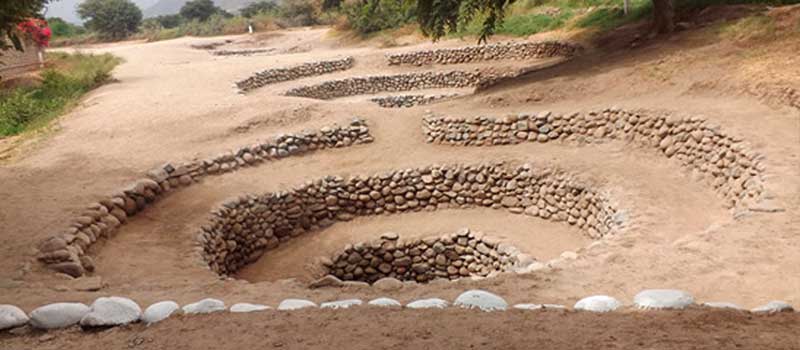
Built by Nazca people during the pre-Columbian period of Peruvian history, the Aqueducts Cantalloc continue to operate with its original purpose. Local farmers still rely on this series of canals to bring water to the arid region.
-
Antonini Museum
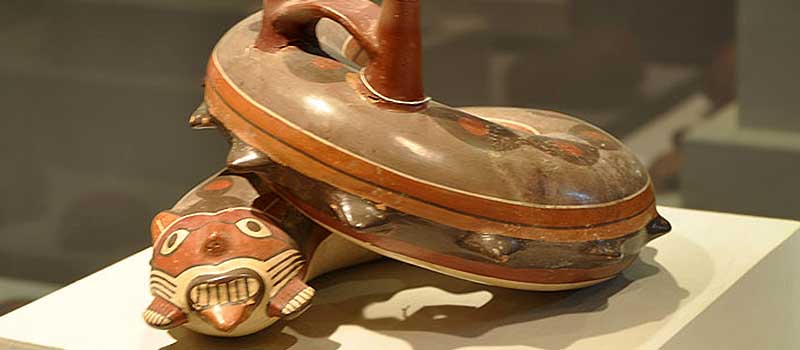
The Antonini museum keeps archaeological remains of the Nazca, where you can find reconstructions of tombs Culture, as well as a broad description of rock art found in the area. The museum has a large collection of ceramics recovered in various excavations.
-
Chauchilla
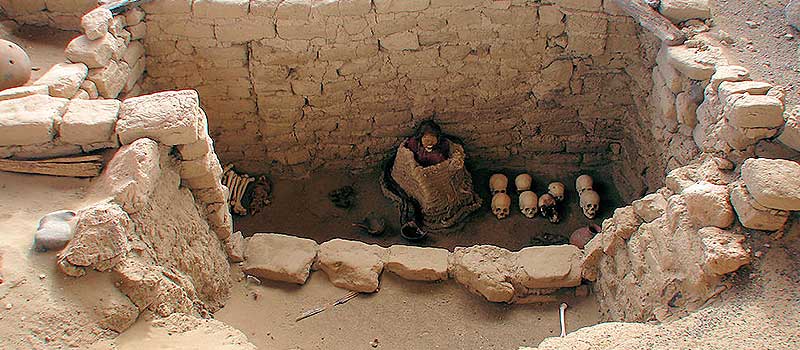
Chauchilla Cemetery is a necropolis dating back more than 1000 years old and belongs to the period of the Ica-Chincha culture. For many years, this ancient necropolis has been plundered by grave robbers, taking with them many valuable objects belonging to the mummies lay there.
-
Pisco Route
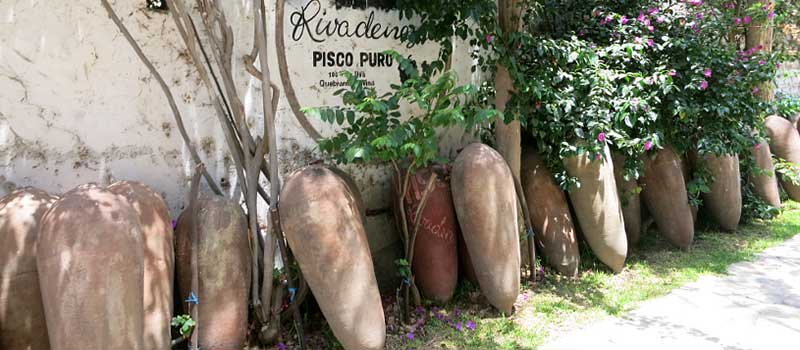
On this tour will follow the route of Pisco visiting various renowned wineries, where the process is still handmade, as well as the most modern and industrialist ones, well known internationally and won the prestige to develop the best piscos of the region. At the same time they will be invited to tastings of the various products in each of the wineries.
Coastal Region / Trujillo Area
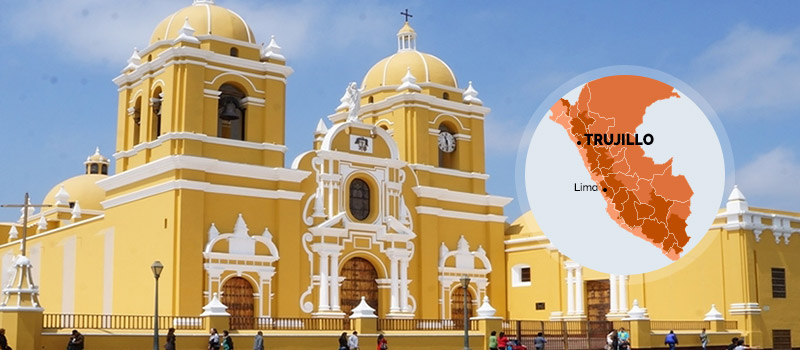
Temples, pyramids and cities of mud that survive inclement weather: Chan Chan (the largest adobe city of the Americas; it belonged to the Chimu culture and contains a numerous amount of precincts (“citadels”), pyramids, sidewalks, cemeteries and other structures), Huaca del Sol y la Luna (Great archaeological sites where the capital of the Moche culture was located), el Brujo (one of the most important religious and political centers of the Moche culture) are some of the most remarkable destinations in the province of La Libertad. It offers exquisite colonial architecture in the beautiful mansions that line its streets, living culture with deeply-rooted customs. It is the birthplace of the seductive "marinera", the national dance of Peru. Trujillo, and the entire northern region, is also known for delicious plates where seafood is the protagonist.
What can we do in Trujillo Area ?
-
Sun & Moon Complex
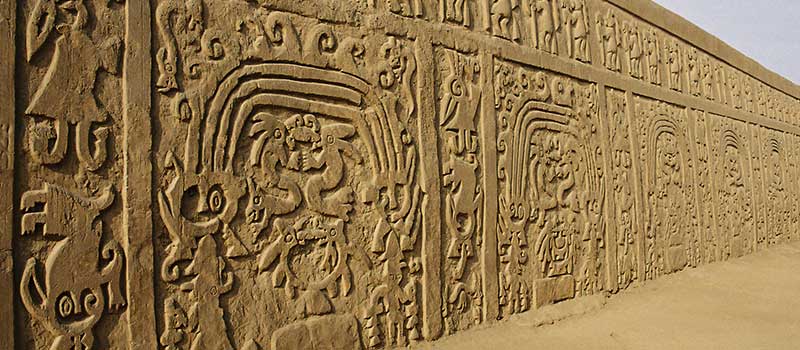
The Archaeological complex of Sun and Moon Temples are located near the stunning Cerro Blanco Hill. Both huacas were the center of ancient Moche people power, which took place between 100 and 900 AD. Currently in the middle of these two pyramids still remains underground the urban nucleus compound by wide avenues, houses, streets, squares and passages. During the tour in "Huacas de Moche" Site Museum you'll appreciate the iconography of this culture, and highly internationally recognized ceramics called huaco portraits or figures of gold and silver, ritual scenes of battles between warriors, where the defeated were led to the temple to be sacrificed and get the blood, symbol of fertility and renewal of its power; an offering offered to his Ai Apaec divinity.
-
Chan Chan, Dragon & Huanchaco
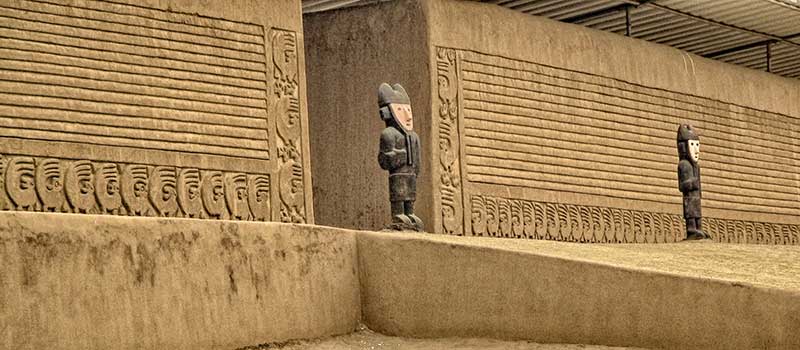
Chan Chan, known as Nik-An Palace, is the political and administrative capital of Chimu kingdom. Its original length was more than 20 Km2; currently it covers only 14 km2, Chan Chan is considered "The largest mud city from the world". In November 28, 1986, UNESCO declared Chan Chan a Cultural Legacy of the humankind. Huaca Dragon or Rainbown temple is an archaeological site that belongs to Chimu culture. This temple is surrounded by a decorated wall which was dedicated to the rainbow as a fertility symbol. Huanchaco beach is a place where the Mochicas gave origin to Ceviche, a Peruvian dish worldwide recognized; artisan fishing cove, where you can still appreciate the use of the old sailing crafts known as totora reed boats.
-
El Brujo Complex
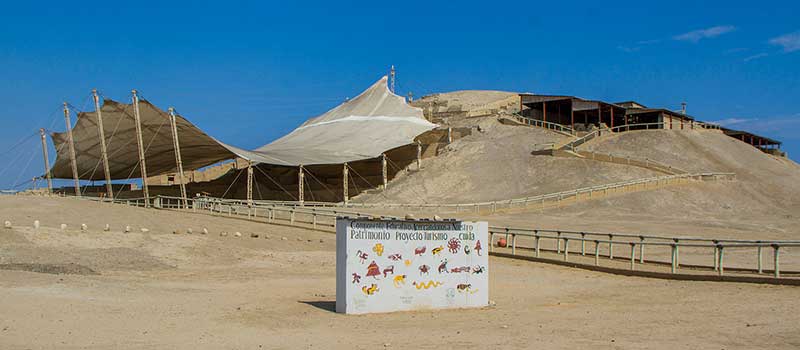
El Brujo complex is one of the oldest and most important archaeological complexes on the north coast of Peru it contains more than 4,500 years of history. The archaeological complex (2,500 BC) is made up of 3 major sites: Huaca Cortada, Huaca Prieta and southern is the most ancient one called Huaca Cao Viejo, with its imposing polychrome reliefs of naked characters tied by the neck with a rope, known as "Prisoners". In the Cao Museum the most important discovery of the Peruvian culture was found, the Lady of Cao, the only female ruler of ancient Peru that is now worldwide recognized and whose tattooed mummy, in perfect condition, is the greatest archaeological finding currently.
-
Royal Tombs of Sipan Museum
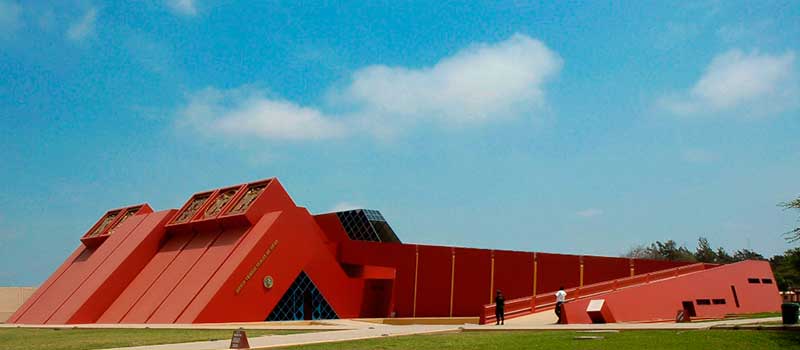
The Royal Tombs of Sipan Museum is one of the most impressive and modern archaeological museums in Southamerica, it shows all the richness and ostentation with which the Lord of Sipan was buried: gold and silver, fine weaving, emblems of religious and military power, and large quantity of ceremonial utensils, achieving more than two thousand pieces of gold. The discovery of the Royal Tombs of Sipan is an important event in the archeology of the continent, because for the first time the magnificence and majesty of the oldest ruler of Peru was revealed.
-
Sican Museum
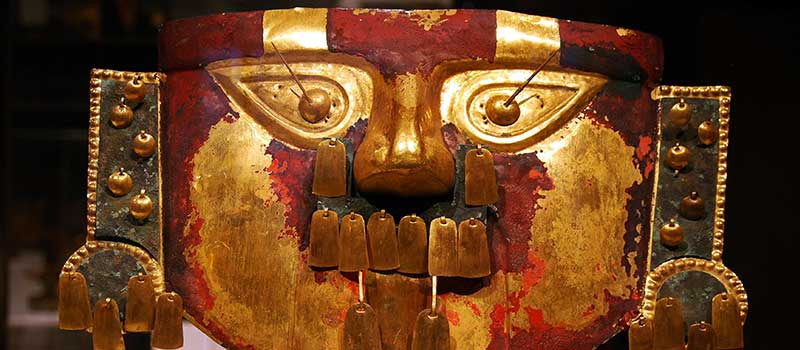
Sican Museum is dedicated to the culture with the same name which, after the collapse of the Moche culture, flourished in Lambayeque. The museum galleries show in detail the historical process, uses, customs and all the activities developed by the Sican people. Replicas of tombs and funeral attire and ornaments patterns both men from the village and the greatest rulers are also shown. In the hall of ornaments the famous mask of winged eyes, crowns, necklaces and ceramics are displayed.
-
Tucume
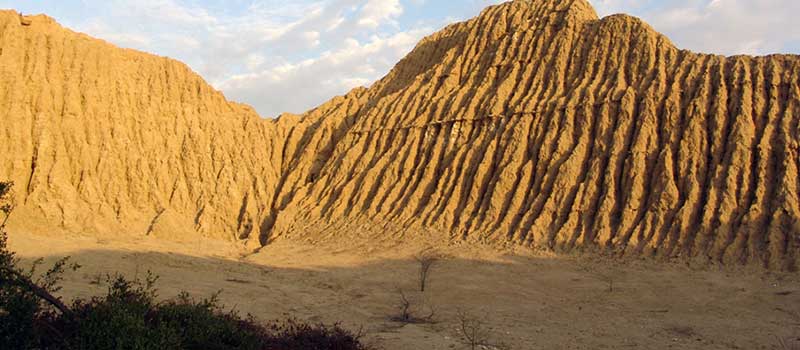
Túcume was the last capital of Lambayeque and Chimu kingdom that prospered before the arrival of the Incas in northern Peru. Here, the lords of Tucume resided with a typical demigod’s luxuries in huge palaces decorated with reliefs of mythical and ritual content, furniture and exquisite jewelry, surrounded by priests, administrators, servitude and expert artisans. Now Huaca Las Balsas is opened to visits, its central theme is marine nature: birds and waves, mythical birds and bird men, deities willing to paddle on a boat with fishing nets surrounded by fish and seabirds.
-
Huaca Rajada Complex
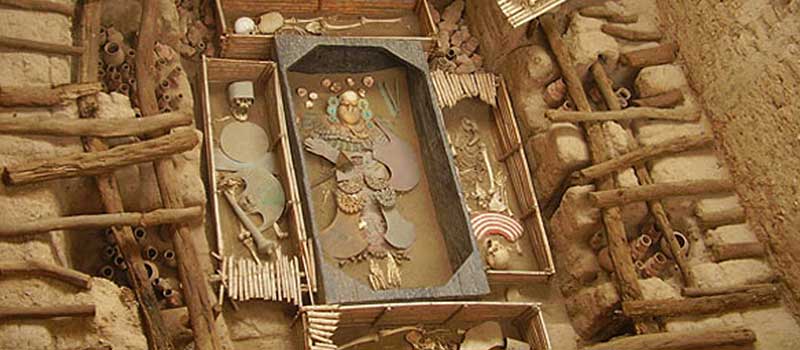
Huaca Rajada complex is located in Sipan village, where the tomb of the Lord of Sipan, one of the most powerful Moche rulers of his time, was found. The tomb of the Lord of Sipan is the best example of splendor and power that the Moche rulers had. In this archaeological complex lots of fine gold jewelry silver and copper works were discovered, as well as ceremonial utensils, they help to have a better understanding of Moche culture. In this site there are many more graves of different characters in the Moche elite, all of this findings are shown in an interesting site museum.
-
Chaparri
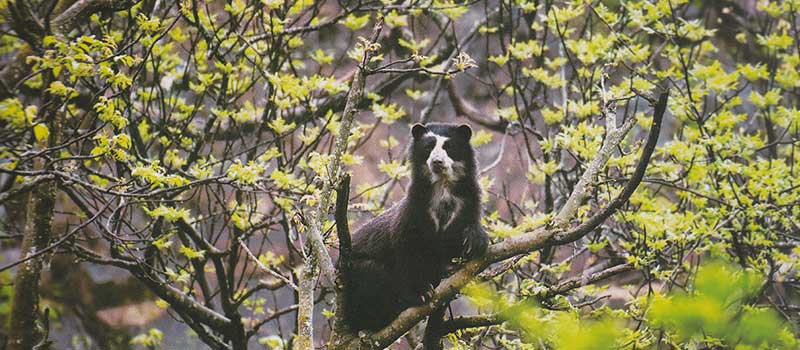
Pómac Forest contributes to the conservation of the most representative area of equatorial dry forest ecoregion in their typical algarroba formation it also makes a perfect combination with the 36 pyramids of pre -Inca culture called Sican; which it is home of a number of typical dry forest species, especially diversity of birds, some endemic ones. Stands out the millenary tree El algarrobo tree capriciously shaped with over 4 centuries old. Chaparrí is one of the best areas of dry forest protection and is home of a wide variety of wildlife, including many endemic and threatened species such as Andean or spectacled bear, Andean Condor, White - winged Guan, Coastal Zorro, guanaco, pitajo of Tumbes, etc. The reserve is named due to the spectacular mountain called Cerro Chaparrí that dominates the landscape, the mountain was considered holly by the Mochica Culture and it still is for shamans from all over Peru. Today it is a model of community conservation and ecotourism project where local people benefit from the protection of their natural resources. Additionally Chaparrí is a scientific research center dedicated to the dry forest ecosystems and the species that inhabit.


